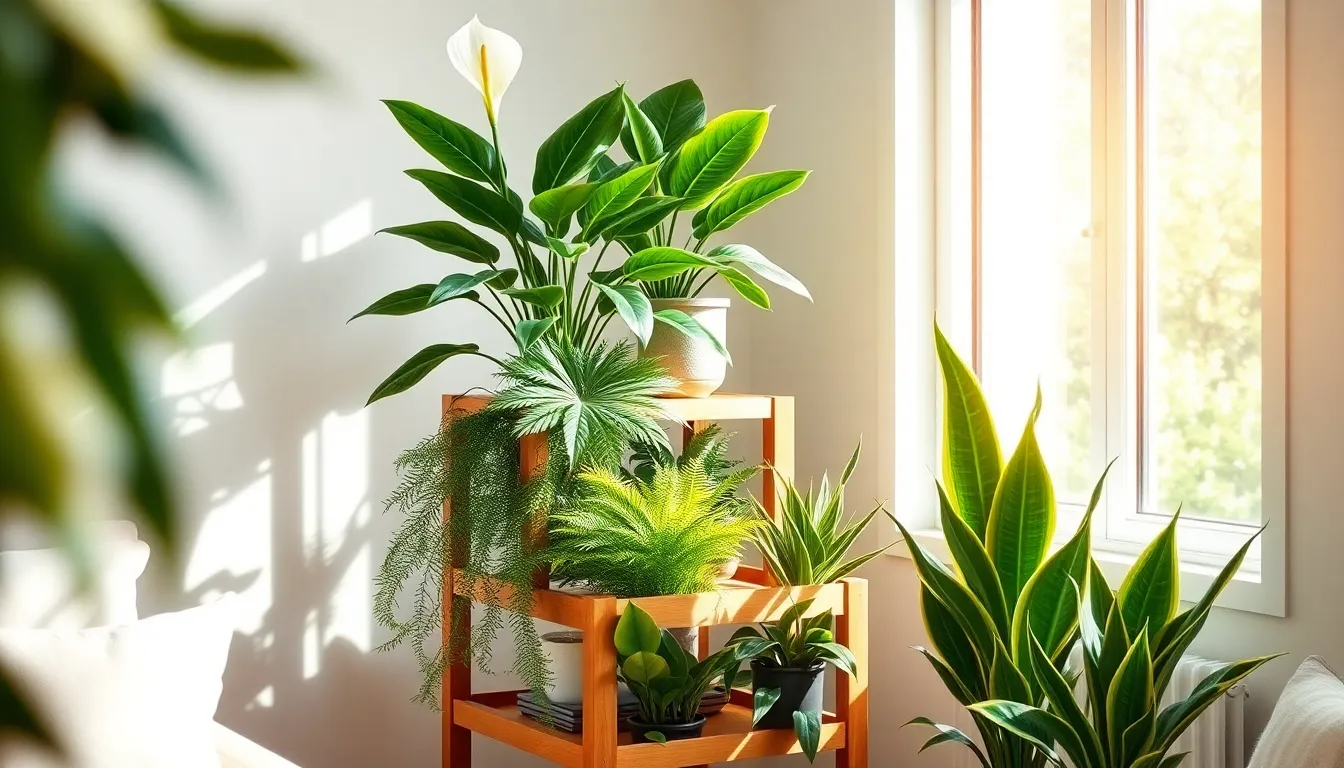In the bustling rhythm of modern life, our homes should be sanctuaries of peace and health, and what better way to achieve this than by incorporating air-purifying plants? Whether you’re a seasoned gardener with a sprawling backyard or a beginner nurturing your first windowsill herb, these green companions can transform your living space into a haven of fresh air and tranquility.
Air-purifying plants do more than just beautify your home; they play a vital role in cleansing the air of toxins, contributing to a healthier indoor environment. In this article, you’ll discover a curated selection of plants renowned for their ability to improve air quality, along with tips on how to care for them so they can thrive in your space.
For those who are just starting, we’ll guide you through the basics of plant care, ensuring you feel equipped and confident to welcome these botanical wonders into your home. And for the more experienced horticulturists among us, we’ll delve into advanced insights on maximizing the air-cleansing benefits of your green friends, helping you to cultivate a vibrant indoor oasis.
Top Air-Purifying Plant Choices
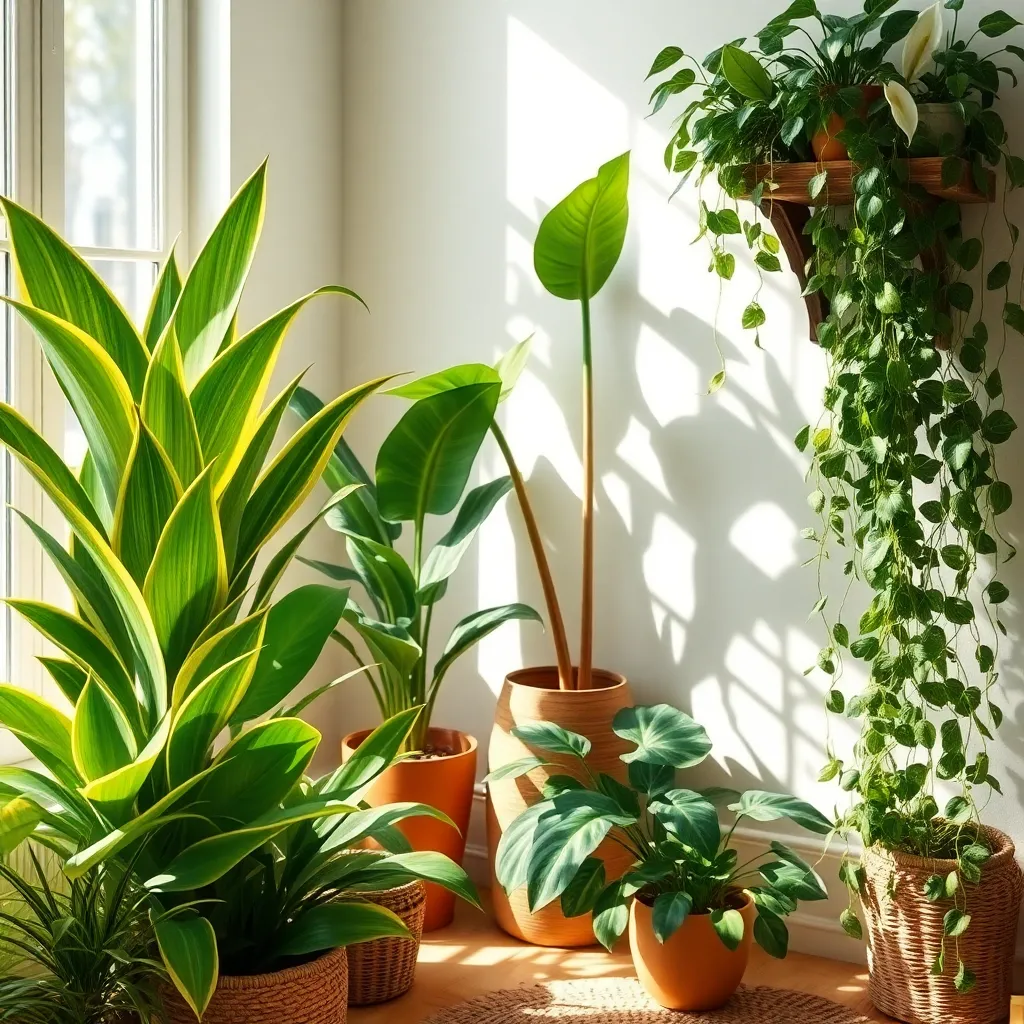
One excellent choice for an air-purifying plant is the Peace Lily, known for its ability to remove toxins like ammonia and benzene. It thrives in low to medium light conditions, making it perfect for indoor spaces with indirect sunlight.
For optimal growth, use a well-draining potting mix and keep the soil moist but not soggy by watering approximately once a week. Regularly check the leaves for dust and wipe them gently with a damp cloth to ensure they can effectively filter the air.
Another top contender is the Snake Plant, which is not only visually striking but also a powerhouse in removing formaldehyde. This hardy plant requires minimal care, preferring bright, indirect light but can tolerate low light conditions as well.
When it comes to watering, allow the soil to dry out completely between waterings, typically every two to three weeks. An advanced tip for Snake Plant care is to rotate the pot every couple of months to encourage uniform growth.
The Boston Fern is another fantastic option, especially for humid environments like bathrooms. It helps to remove pollutants such as xylene and formaldehyde, contributing to cleaner indoor air.
To keep a Boston Fern healthy, maintain high humidity by misting the plant several times a week and using a peat-based potting mix. Consider placing the fern on a tray with pebbles and water to further boost humidity levels around the plant.
Benefits of Indoor Air Filters

While air-purifying plants are an excellent natural choice for enhancing indoor air quality, using air filters can provide additional benefits to create a healthier living environment. Air filters work effectively to remove dust, pollen, and other airborne pollutants that plants alone may not handle.
Gardening enthusiasts can strategically use air filters to complement the work of their air-purifying plants. For example, placing an air filter near a collection of plants can help reduce the buildup of dust on leaves, allowing plants to photosynthesize more efficiently.
Beginners might find it helpful to combine plant care with regular air filter maintenance. Changing or cleaning air filters every few months ensures they operate efficiently, supporting a cleaner indoor environment for both humans and plants.
For those interested in creating an optimal indoor air quality ecosystem, consider using a HEPA filter. These filters are known for capturing smaller particles, making them a robust partner for air-purifying plants in homes with pets or high traffic.
Caring for Clean-Air Plants
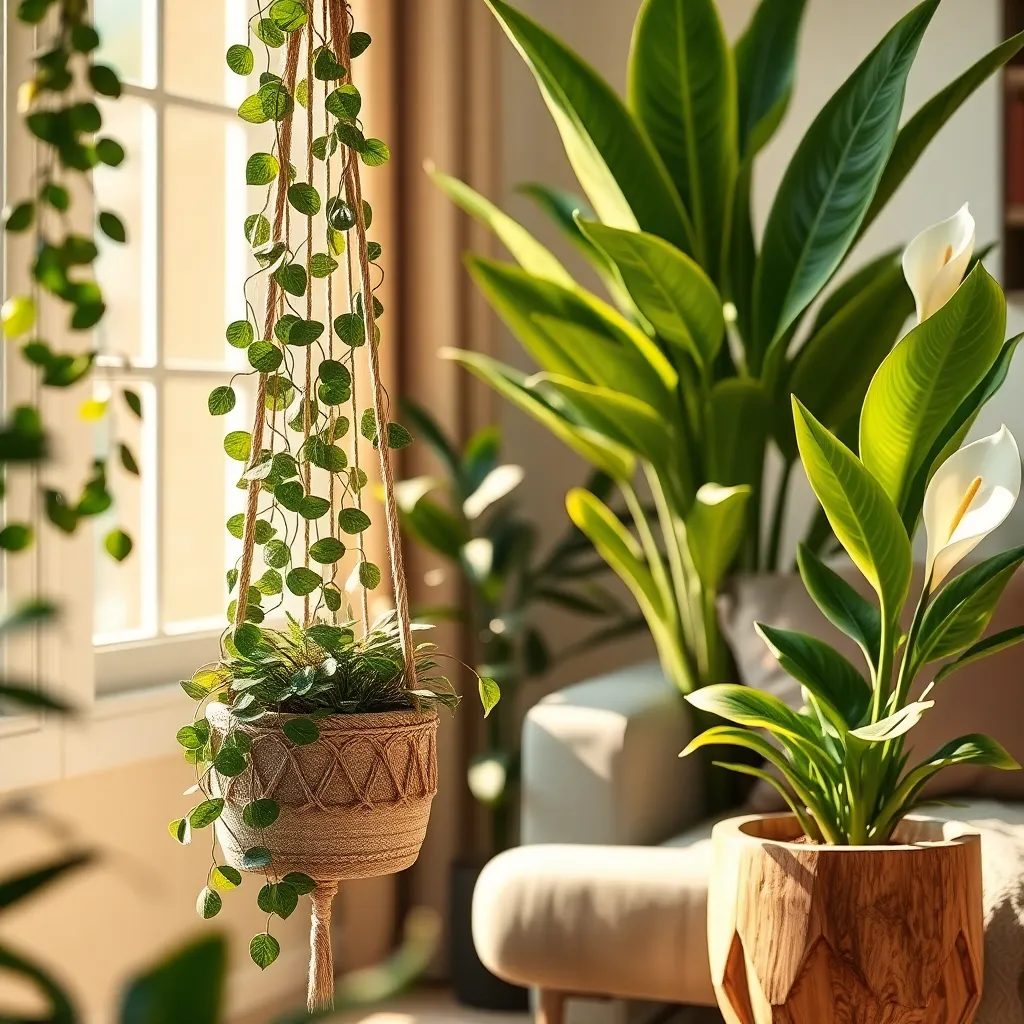
To effectively care for clean-air plants, it’s essential to understand their specific light needs. Most air-purifying plants, like the popular spider plant and snake plant, thrive in indirect sunlight, making them perfect for rooms with filtered light.
Watering practices are crucial for maintaining healthy plants. Ensure you water them only when the top inch of soil feels dry, as overwatering can lead to root rot, a common issue with indoor plants.
Choosing the right soil can significantly impact the health of your plants. Use a well-draining potting mix, ideally one enriched with perlite or peat moss, to provide the optimal environment for root development.
For those looking to expand their gardening skills, consider the role of humidity in plant care. Increasing humidity levels with a humidifier or by placing a water tray nearby can enhance the thriving conditions, especially for plants like ferns and peace lilies.
Ideal Placement for Maximum Purity
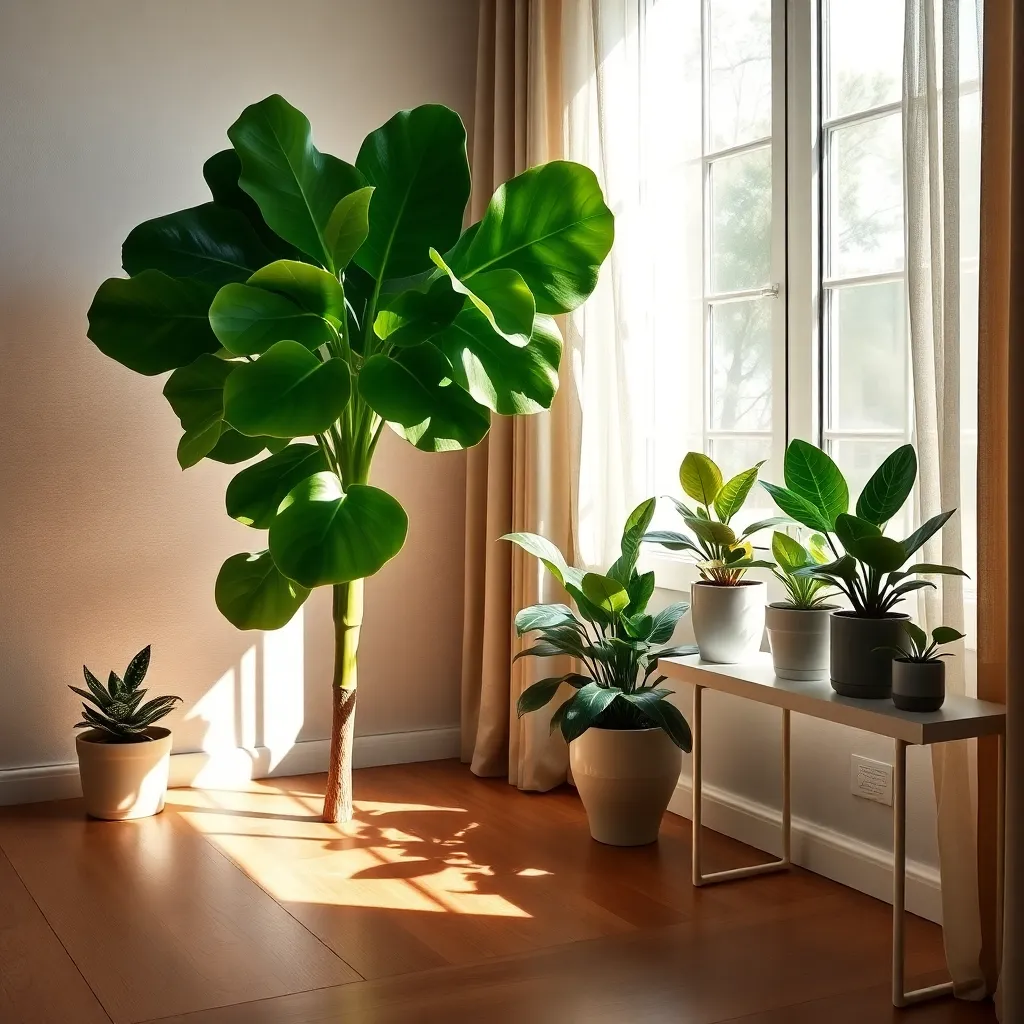
To maximize the air-purifying benefits of your plants, strategic placement within your home is key. Consider areas with high air circulation but avoid direct drafts, as they can stress the plants.
Position your plants near windows where they can receive bright, indirect light, which is ideal for most air-purifying species. If natural light is limited, use grow lights to supplement their lighting needs.
Humidity levels also play a significant role in plant health, particularly for tropical varieties like the Peace Lily and Boston Fern. Place these plants in humid areas like bathrooms or kitchens, or use a humidifier to maintain optimal conditions.
To ensure even growth, rotate your plants every couple of weeks so that all sides receive equal light exposure. This simple step can prevent lopsided growth and keep your plants looking lush and full.
For those with more experience, consider grouping plants together to create a microclimate that enhances humidity and air purity. This not only boosts their purifying potential but also adds a lush aesthetic to your living space.
Common Issues and Solutions
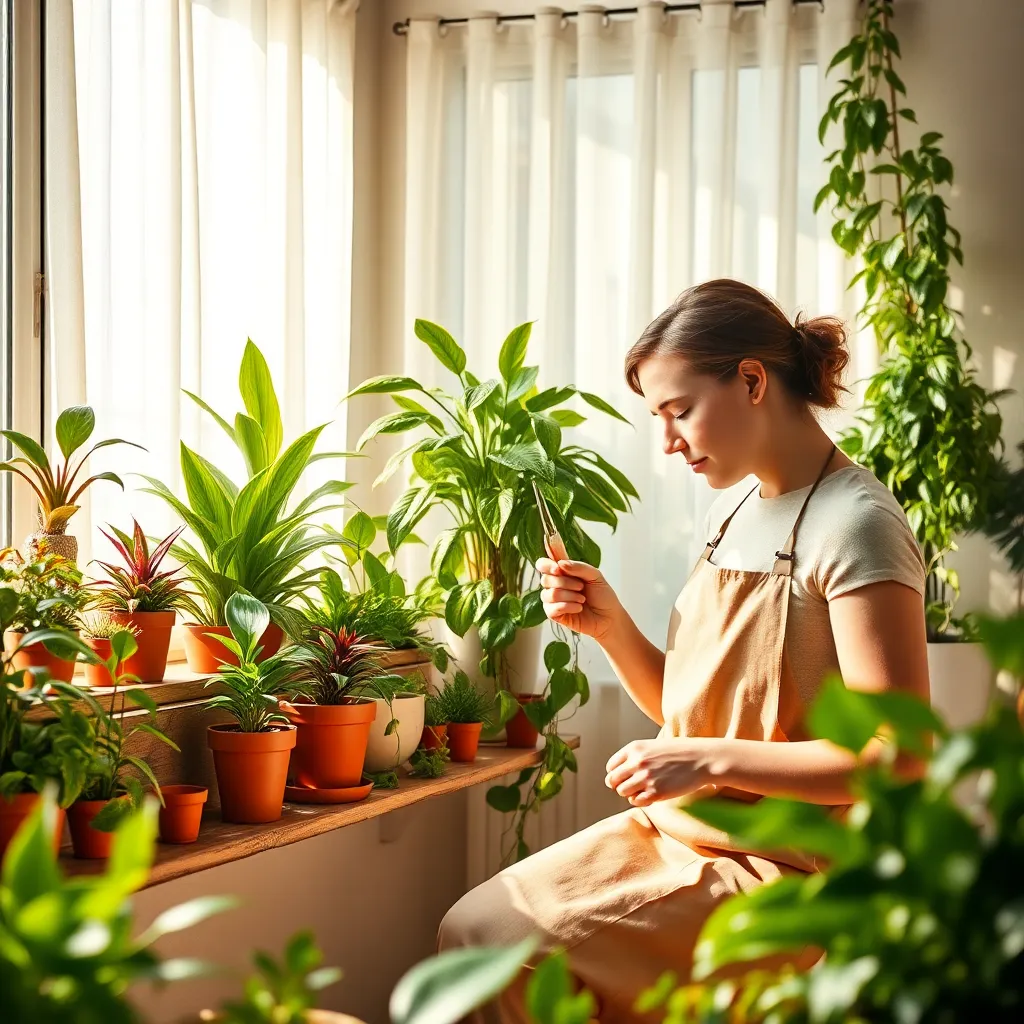
One common issue with air-purifying plants is overwatering, which can lead to root rot. To avoid this, ensure that your plant pots have proper drainage and use a well-draining soil mix, such as a combination of potting soil, perlite, and sand.
Additionally, many air-purifying plants can suffer from low humidity, particularly during winter months when indoor heating is used. You can increase humidity by placing a tray of water with pebbles near the plants or by using a humidifier to maintain an ideal environment.
Pests like spider mites and aphids can also become a problem for your indoor plants. Regularly inspect your plants and, if you notice any pests, remove them using a gentle spray of water or an insecticidal soap solution.
Another issue is inadequate lighting, which can stunt the growth of your air-purifying plants. Position your plants near windows where they can receive bright, indirect light, or consider using grow lights if natural light is insufficient.
Temperature fluctuations can stress plants, especially those near drafty windows or heating vents. Keep them in a stable environment with temperatures ranging from 65°F to 75°F to ensure healthy growth.
Conclusion: Growing Success with These Plants
In embracing the nurturing essence of air-purifying plants, we uncovered five key relationship concepts: creating a harmonious environment, fostering growth together, prioritizing mutual well-being, embracing adaptability, and cultivating patience. These elements mirror the care and attention essential for thriving relationships, just as they do in maintaining flourishing plants.
As an immediate step, consider introducing a plant like a peace lily or snake plant into your home. This simple act can transform your living space and reinforce your commitment to nurturing the bonds you cherish.
Bookmark this article as your go-to guide for enhancing both your home and relationships. Let it serve as a reminder that just as plants purify the air, you can purify and strengthen your connections with intention and care.
Looking forward, remember that the success of any relationship lies in continuous growth and adaptation. By intertwining these principles into your daily life, you are setting the foundation for a relationship that not only survives but thrives. Take this journey of growth and watch your relationships flourish, just like the greenery you nurture.

